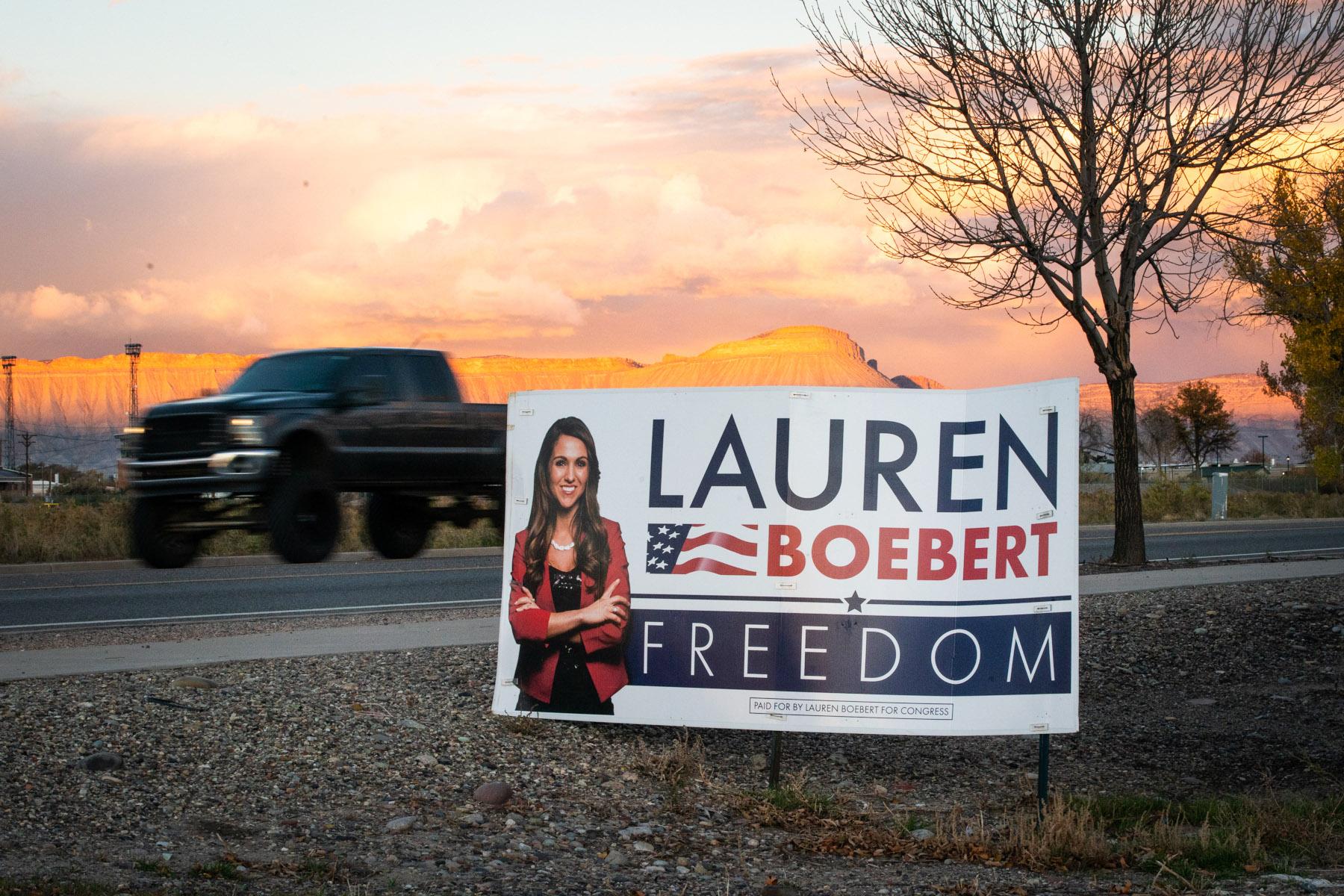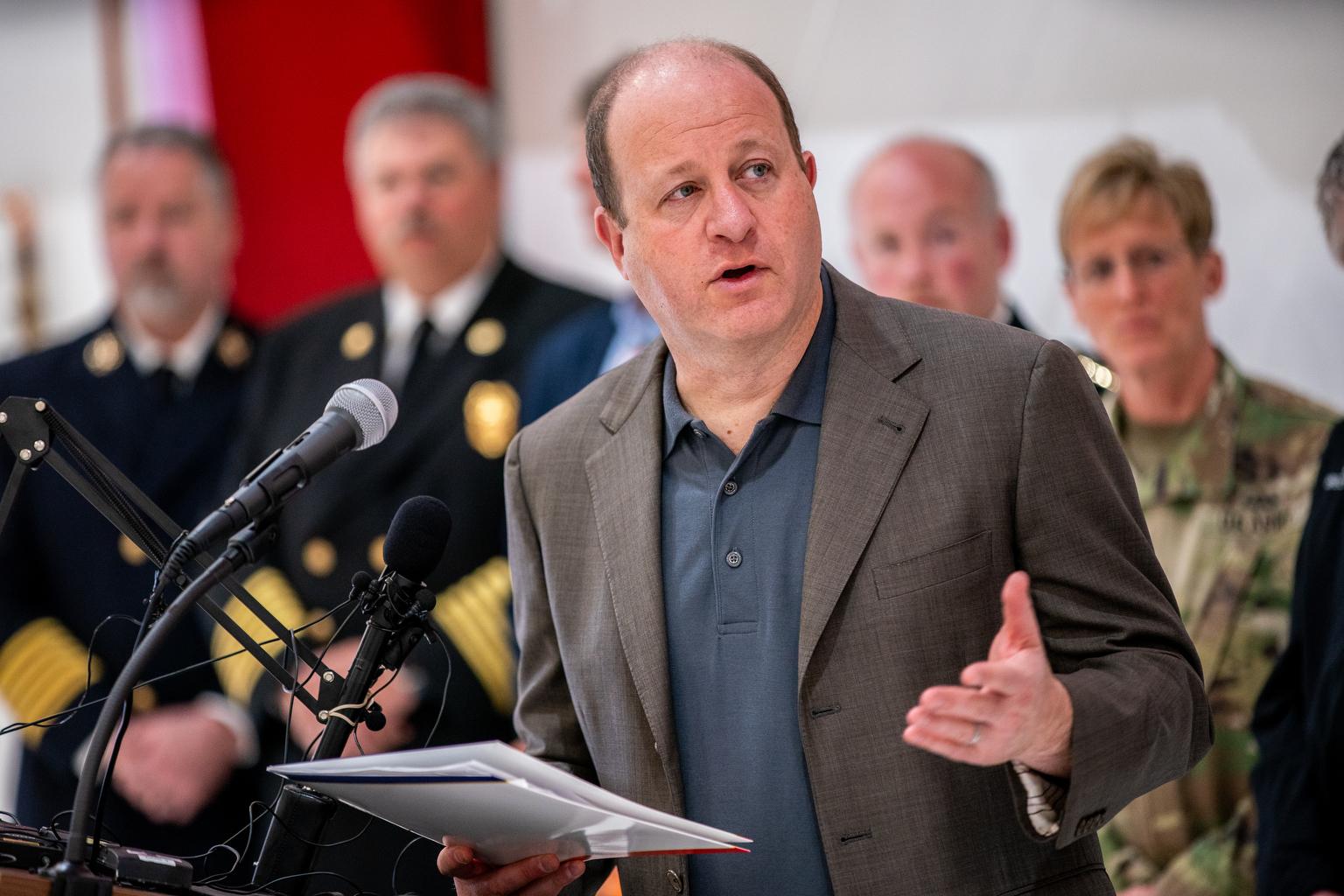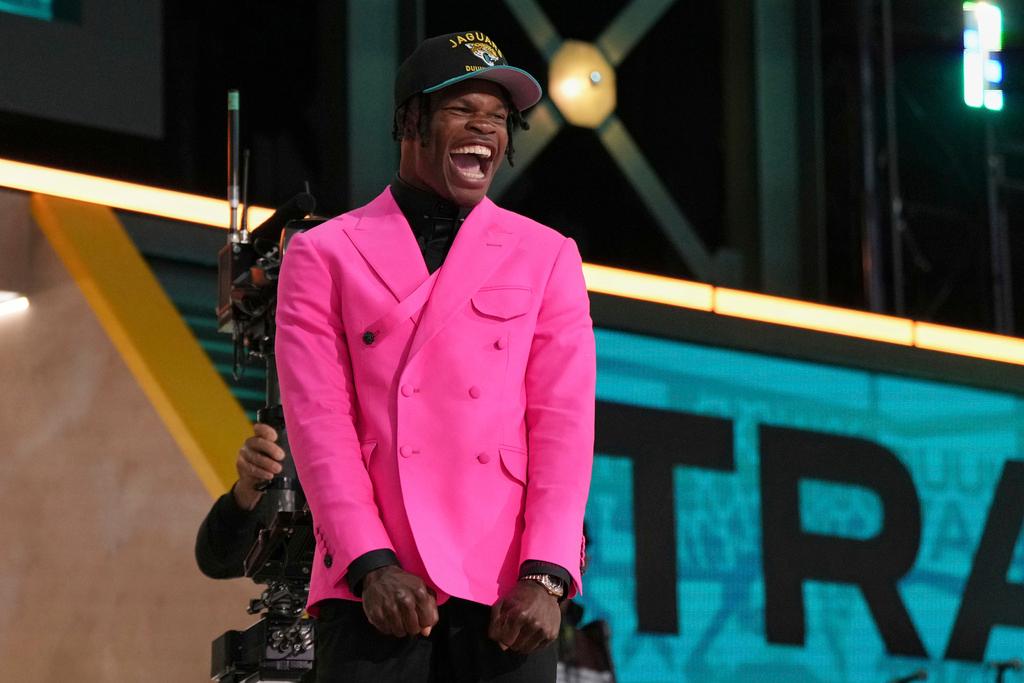
This was supposed to be a relatively easy election for Rep. Lauren Boebert — at least according to historic precedent and the conventional wisdom in the state’s political circles.
Boebert won her first election by six points in 2020. Last year, the district was redrawn, making it even more conservative. The new boundaries cover an area that Republicans have won by an average of 9 percentage points in recent elections, including former president Donald Trump in 2020.
And yet Boebert now clings to only a narrow lead over her Democratic challenger, Adam Frisch, in a close race that won’t be called until the very last ballots to be counted.
“This was a significant swing. This was a plus-nine Republican district,” said Justin Gollob, a professor of political science at Colorado Mesa University. “So going into this election it should have been a fairly convincing win for Lauren Boebert. For it to be this close at the end is a surprise to say the least.”
As of Wednesday night, Frisch lagged about 1,100 votes, holding roughly 49.8 percent of the vote. His last hope of winning the race comes this Thursday and Friday as clerks across southern and western Colorado tabulate the last straggler ballots.
The early results show Frisch has outperformed other Democrats in the district, as well as his party’s previous candidates. He’s currently doing about 5 percentage points better than Diane Mitsch Bush, the Democrat who was defeated by Boebert two years ago.
The close race comes as Democrats have posted major successes throughout the state — but Frisch may have taken a different route to victory than other candidates.
Frisch’s performance wasn’t the result of a tsunami of Democratic voters.
In fact, Democrats in CO-3 were slightly less likely to vote this year than those in the rest of Colorado, according to a CPR News analysis. The pollster Keating Research found a similar pattern.
As a result, Democrats made up only about 25 percent of the electorate in the district — down several points compared to the same area in 2020.
(The district changed shape between 2020 and 2022; both CPR News and Keating looked at how the 2020 election results would have played out in the current district borders.)
Neither Republicans nor unaffiliated voters saw similar declines in their share of the votes in the 3rd — indicating that Democrats in the area were not especially fired up this year. Shad Murib, a Democratic consultant in Eagle County and the husband of an early opponent of Boebert’s, said that he was concerned at points by low Democratic enthusiasm.
“It was the first time in my history in the Western Slope that we were having an issue with Democratic turnout,” Murib said.
This isn’t a new phenomenon. The analyses show that Democratic turnout in the 3rd District has also lagged behind other districts in previous years — a result, perhaps, of living in an area where conservatives are more dominant and a Democrat hasn’t won a congressional race since 2008.
The difference this year was that Democratic turnout rates lagged further behind Republican rates than they had in 2020 or 2018.
That’s part of a larger phenomenon. Voters statewide were less likely to vote this year, compared to 2018. About 68 percent of voters participated in 2018, but only 59 percent have had a ballot counted so far this year.
And those declines were especially pronounced for Democrats — particularly in the 3rd Congressional district, where they were about 3 percentage points less likely to vote than Republicans. That’s a larger gap compared to the rest of the state than in both 2020 and 2018.
Murib said Democrats started addressing the turnout issue during the campaign. For example, the party did not initially open an office in Eagle County, where they have had a presence in previous elections. That office was opened later in the summer.
Statewide, the declines in turnout rates obviously didn’t hurt Democrats much, since they swept the statewide contests and gained even more power in the statehouse. Democrats have more registered voters than Republicans, so a lower voting rate doesn’t mean they lose. They also tend to pick up support from unaffiliated voters, who have become the largest group in the state.
But in the 3rd District, where Democrats are significantly outnumbered, those lost votes are more painful. Joe Salazar, a former state lawmaker who remains active in progressive politics, said that Democrats could have done more to win over Chicanos and Latinos.
“The Boebert/Frisch battle is a perfect example of how more work in the CD-3 Latino community needed to be done by the Dem candidate,” he wrote.
The district’s Latino communities vary greatly from region to region. They range from relatively new arrivals to Colorado who have settled along the I-70 corridor and in the Roaring Fork Valley to work in ski communities, to families who have called Southern Colorado home much longer than Colorado has been a state.
So, how did Frisch beat expectations?
With Democratic participation down, Frisch’s gains have likely come from unaffiliated voters or Republicans — which was exactly his plan, according to Morgan Carroll, chair of the state Democratic Party.
While much of modern politics is about “turning out” the voters who already support a candidate, Frisch put much of his focus on persuading ambivalent voters to join his cause, Carroll said.
“Persuasion was essential,” Carroll said.
She continued: “The neck-and-neck race that we've seen in the Third District is only because we got a nominee in Adam Frisch who understood that he needed to get a very significant chunk of Republicans, … the majority of unaffiliated (voters) and Democrats. And that's exactly what he did.”
Frisch made shoe-leather campaigning a big part of his effort; he told CPR he made 102 campaign stops just in the last 11 days of the campaign. That stands in contrast to Boebert’s first challenger: With the pandemic in full force in the fall of 2020, Democrat Diane Mitsch Bush conducted most of her campaign virtually from her home in Steamboat Springs.
The data shows Frisch did well in areas that haven’t traditionally been friendly to Democrats. He improved upon the previous Mitsch Bush’s performance in the conservative stronghold of Mesa County by 8 percentage points, taking about 42 percent of the preliminary count there.
Frisch also improved upon Mitsch Bush and other 2020 Democratic Congressional candidates’ margins in every other county in the districts.
It happened without much national support.
The Democratic Congressional Campaign Committee “did not target this race,” Carroll said. That’s understandable, she explained, with Boebert’s formidable statistical advantage.
But state-level Democrats have been building an operation in CO-3 for two years, she said.
“Adam came in and has run an incredibly strong campaign but all of us had been working for basically a two-year project to hand him some infrastructure,” she said in a press conference. “I’ll tell you we weren’t surprised — we’re hopeful.”
The state effort included hiring three organizers long before the election got underway and connecting with local party chairs.
For her part, Boebert has blamed other Republicans for her performance. “I don’t know if there wasn’t enough enthusiasm for our top ticket candidates for governor and Senate or what happened there, but there was a lot of shifting in the votes there,” she told reporters last Thursday, The Wall Street Journal reported.
More 3rd Congressional District coverage:
- Wait, so why is it taking so long to count votes in Colorado? Here’s why — and other ballot counting questions, answered.
- Frisch is a moderate Democrat and former Aspen City Council member. He made a centrist pitch to voters as he faced an uphill battle in District 3.
- Read our full November 2022 interview with Adam Frisch. He talked about ballot curing, voter turnout and whether he’s "Democratic enough."
- It quickly became clear on Election Night that hardline conservative Rep. Lauren Boebert would face a tougher-than-expected reelection race.
- Residents of Colorado’s vast 3rd District woke up on the days following Election Night without knowing who would represent them in Congress for the next two years. Here's what they have to say.
- Efforts from both parties to reach voters who needed to cure their uncounted ballots quickly ramped up. Some voters felt like all the calls, emails and even door-knocking bordered on harassment, while others were pleased to be at the center of things.









